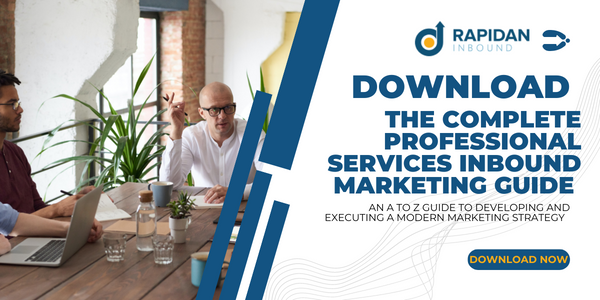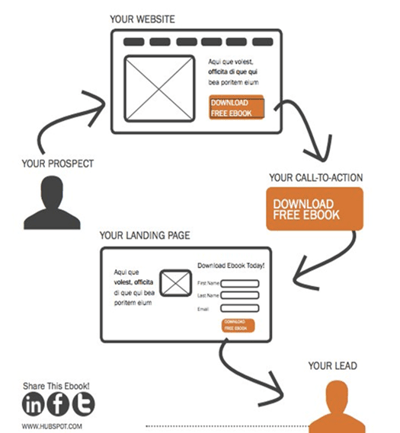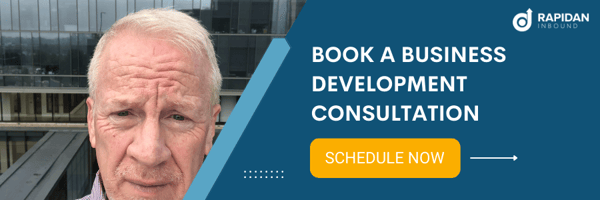The Anatomy Of The Professional Services Sales Funnel
For many professional services businesses, sales is a hit-or-miss proposition. Many do great work for customers, which results in referrals and cross-sell opportunities.
Building sales opportunities with businesses that don't already know you is a different story. Most SMB professional services firms don't have dedicated sales professionals; practitioners bring in new business, manage the account and work to develop more business through upsells and referrals. Bringing in new opportunities often gets lost in the shuffle.
And professional services firms that have dedicated sales professionals see mixed results. Results vary from quarter to quarter in a seemingly random manner.
The professional services firms that consistently generate revenue have one thing in common - a well-defined sales funnel and sales process that uses technology to maximize results.
The foundation of the professional services funnel
Most professional services firms have relatively high deal values. They sell project work or ongoing retainers that require a significant commitment on the part of their customers. Because of this, sales processes are lengthy and decisions are made by teams, not individuals.
High-performing firms typically have well-defined ideal customer profiles - they know which industries, company sizes and geographic locations for which they have a competitive advantage. Rather than try to be all things to all people, they focus relentlessly on their target markets and don't waste time outside of them.
They also know the types of people within their target markets that play a role in the buying process. They know who the economic buyers are, who the user buyers are and which procurement bases they need to touch to close a deal.
So to summarize, the professional services sales funnel usually involves high deal values that take a long time to close and require buy-in from multiple decision-makers. Because of the resources necessary to close these high-value deals, professional services firm focus on the opportunities in which they have the highest probability of winning.

Top of the funnel: Lead Generation
The first step in the professional services sales funnel is to bring potential buyers into the sales funnel. The majority of these top of the funnel leads are either not in an active buying process or are in the beginning stages of one.
The first step in developing a lead generation process is to identify the various marketing channels that you will use to draw potential buyers into your sales funnel. Typical professional services marketing channels include the following:
- Inbound/content marketing
- Outbound prospecting (generally email)
- Networking (trade shows and industry groups)
- Paid advertising (Google Adwords and LinkedIn Sponsored Updates)
- Referrals
- Cross-sells and up-sells
For each marketing channel, you should develop a consistent sales process that can be tracked and measured with key performance indicators. While it's important to personalize your process for each prospect, everyone involved in revenue generation should use the same processes and communicate a consistent value proposition.
By using a consistent lead generation process that is tracked and measured frequently, you can adjust the process to do more of the things that are working and change or jettison tactics that aren't working.
IMPORTANT: Some of your inbound leads will be in an active buying process when they first come to your website. That's why it's important to have a "Consultation" offer prominently featured on each page of your website.
Middle of the funnel: Lead Qualification
As mentioned above, most professional services sales opportunities require a significant investment in time and resources to pursue. Most of us can't afford to go chasing after every deal like a Labrador Retriever after a squirrel.
That's why it's so important to qualify out the leads that don't fit your target profile. There are three levels of lead qualification in the typical professional services sales funnel.
Marketing Qualified Leads
Marketing qualified leads are those that match your target market profile (industry, size, buyer role, etc.) For those that are generating leads through content marketing, this level of qualification can be automated. Here is an illustration of the inbound lead generation process:

Lead qualification can be automated by data gathered in lead generation forms. If you look at our lead generation offer at the bottom of this page, you will see that we ask three qualification questions:
- Industry
- Lead's Role in her Company
- Is The Lead a HubSpot Customer
We've set up an automated process to send an internal email to alert us to leads that fit our target profile. If someone fits our target profile, we move to the second stage of lead qualification.
Sales Qualified Leads
Once a lead is considered Marketing Qualified (fitting target profile criteria,) the next step is to perform lead intelligence to see if the lead is worth pursuing. In our sales process, this involves the following:
- Reviewing the lead's LinkedIn profile and company website to get a better idea of their background, pain points and company objectives.
- Reviewing our HubSpot marketing automation software to see
- which content the lead has downloaded
- which website pages they've viewed
- which emails they've opened and clicked
- whether they've viewed trigger pages that may indicate they're in a buying process (e.g. - solutions and pricing pages)
Once we've completed this analysis, we will either move the lead down the funnel as a sales qualified lead or put them on a long-term lead nurturing path.
BANT/GCPT Qualified Leads
Obviously, it's a waste of time to pursue a lead that doesn't have the budget to buy what you're selling or who doesn't have a real problem that your service solves.
Leads that fall out of the funnel here shouldn't be forgotten - they may have budget or a need later that will make them worth pursuing.
Bottom of the funnel: Sales Opportunities
At this stage of your sales funnel, you've identified genuine sales opportunities. HubSpot defines a sales opportunity as 'a "sales opportunity" is when you are working with a qualified prospect who has a good chance of becoming a customer.'
At this point, your objective is to move the opportunity down a pre-defined process that moves them towards becoming a customer. Typical milestones in the process include:
- Connect meeting to identify prospect needs and requirements
- Getting the decision-makers on board with your proposed solution
- Getting the decision-makers on board with the ROI of your solution
- Scope meeting to agree on the details of your engagement
- Getting all internal approvals to move forward
- Sending a contract for execution
- Receiving signed contract and payment to move forward
The objective is to move through the process without skipping any steps. If you skip steps, you may find that your sure thing has vanished into the air. Having a defined process allows you to track deals and brainstorm with your colleagues on how to get to the next milestone.
Having a defined sales funnel adds consistency and scalability to your firm's growth. Using CRM and KPI dashboards lets your team keep on top of sales so there are no surprises at the end of the year or quarter.





